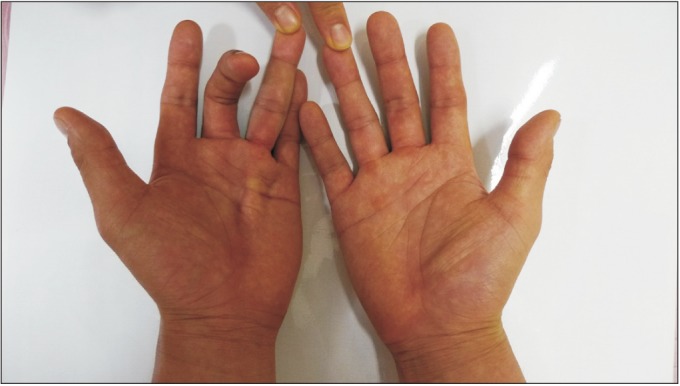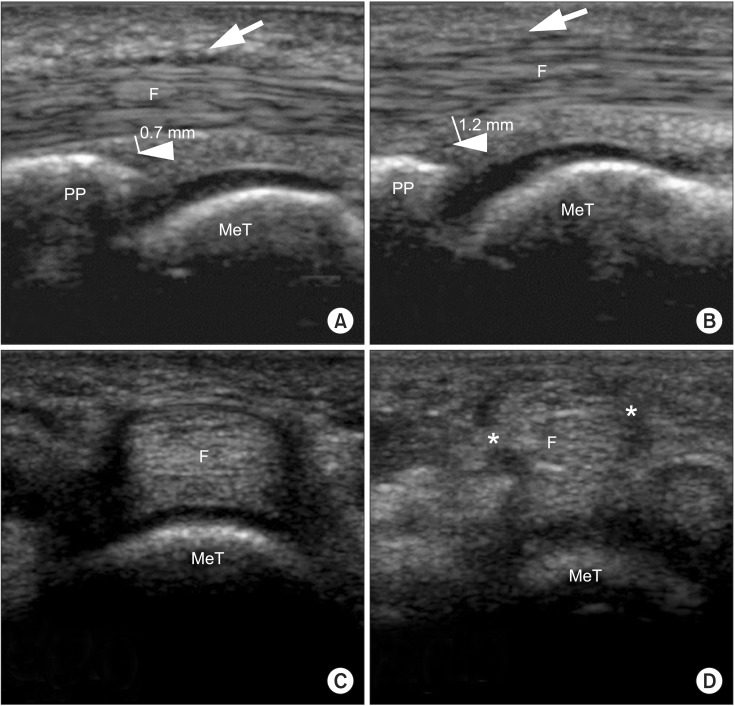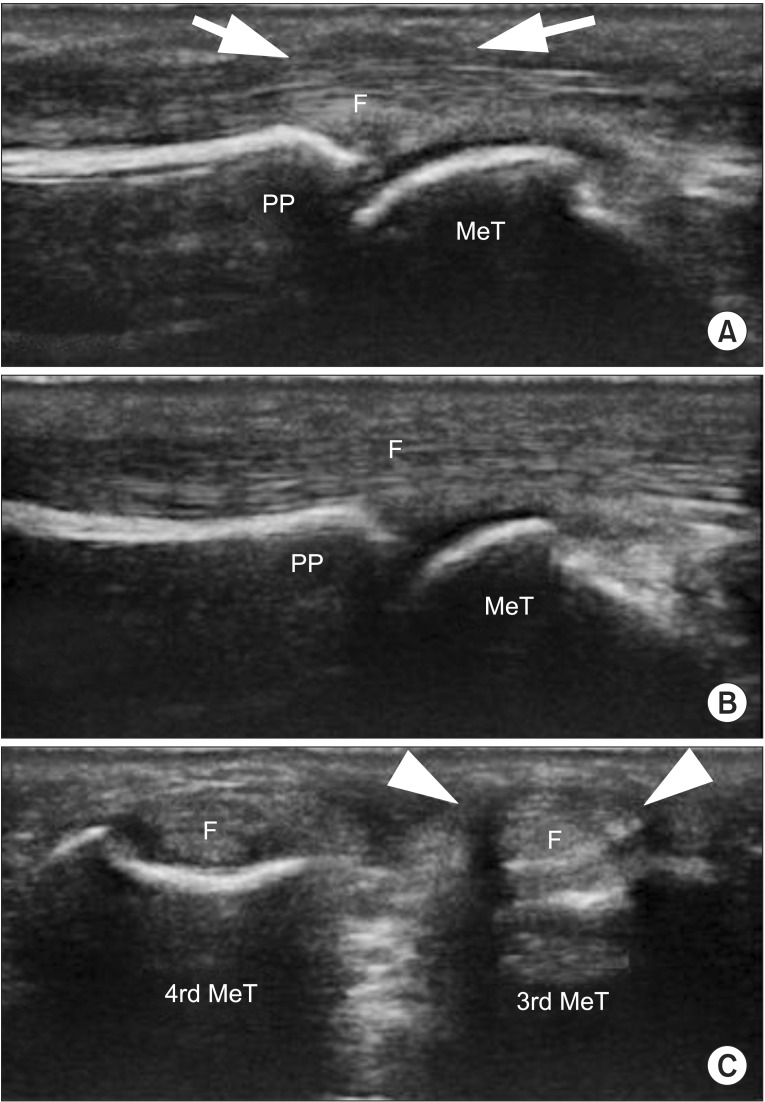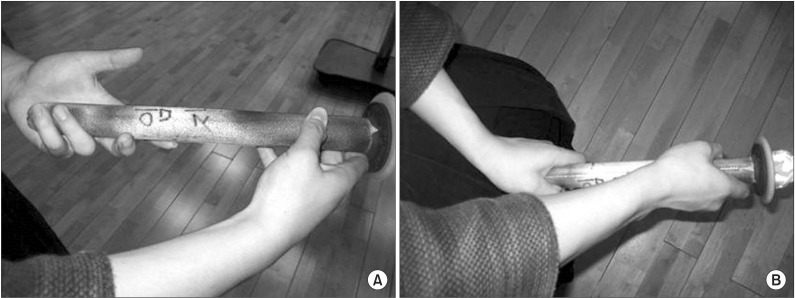Ann Rehabil Med.
2015 Oct;39(5):838-843. 10.5535/arm.2015.39.5.838.
Isolated A1 Pulley Rupture of Left Fourth Finger in Kendo Players: Two Case Reports
- Affiliations
-
- 1Department of Rehabilitation Medicine, Yonsei University College of Medicine, Seoul, Korea.
- 2Department of Physical Medicine and Rehabilitation, National Health Insurance Service Ilsan Hospital, Goyang, Korea. iskrakhs@gmail.com
- 3Department of Diagnostic Radiology, National Health Insurance Service Ilsan Hospital, Goyang, Korea.
- KMID: 2148217
- DOI: http://doi.org/10.5535/arm.2015.39.5.838
Abstract
- Annular pulley injury of fingers is usually observed in rock climbers who support their entire body weight with flexed fingers during climbing. But these lesions can also follow trivial trauma, such as lifting heavy objects with the fingertips, or during sports and recreational activities. The A2 and A4 pulleys are most usually involved and reported most frequently. However, traumatic A1 pulley rupture has not been reported yet, to the best of our knowledge. Kendo is a very vigorous martial art with frequent physical contact. Therefore, we reported two cases of repetitive microtraumatic left fourth finger A1 pulley rupture in Kendo players with results from physical examination and imaging studies, such as ultrasonography and magnetic resonance imaging, together with related literature.
Keyword
MeSH Terms
Figure
Reference
-
1. Lee JC, Healy JC. Normal sonographic anatomy of the wrist and hand. Radiographics. 2005; 25:1577–1590. PMID: 16284136.
Article2. Marco RA, Sharkey NA, Smith TS, Zissimos AG. Pathomechanics of closed rupture of the flexor tendon pulleys in rock climbers. J Bone Joint Surg Am. 1998; 80:1012–1019. PMID: 9698006.
Article3. Bollen SR. Injury to the A2 pulley in rock climbers. J Hand Surg Br. 1990; 15:268–270. PMID: 2366027.
Article4. Jeong HJ, Kim DS, Sim YJ, Choi SB. Musculoskeletal pain in young Kendo player. J Korean Acad Rehabil Med. 2008; 32:553–557.5. Song HS, Park SJ, Han SK, Nah KH, Cheung HK, Choi WK, et al. Analysis of sports injuries in Kendo. J Korean Orthop Soc Sports Med. 2005; 4:122–127.6. Klauser A, Frauscher F, Bodner G, Halpern EJ, Schocke MF, Springer P, et al. Finger pulley injuries in extreme rock climbers: depiction with dynamic US. Radiology. 2002; 222:755–761. PMID: 11867797.
Article7. Hauger O, Chung CB, Lektrakul N, Botte MJ, Trudell D, Boutin RD, et al. Pulley system in the fingers: normal anatomy and simulated lesions in cadavers at MR imaging, CT, and US with and without contrast material distention of the tendon sheath. Radiology. 2000; 217:201–212. PMID: 11012445.
Article8. Stoller DW. Magnetic resonance imaging in orthopaedics and sports medicine. Baltimore: Lippincott Williams & Wilkins;2007.9. Bianchi S, Martinoli C. Ultrasound of the musculoskeletal system. Berlin: Springer;2007.






